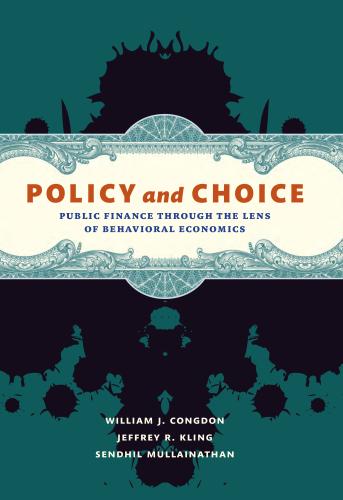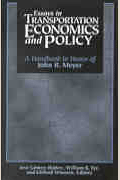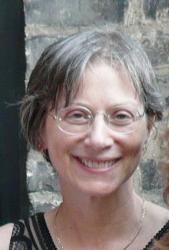Last year Kenneth Arrow gave the opening talk at the World Bank conference, “The State of Economics, the State of the World.” That was appropriate since as much as anyone then alive, he had advanced the state of economics. He was the first to prove Adam Smith’s conjecture that, under some conditions, the market economy attains the ideal of Pareto efficiency. His proof was a two-edged sword. It demonstrated that the invisible hand held only under conditions so unrealistic that they would never be met, even approximately.
In my comments on Arrow’s talk, I discussed work that led to the behavioral economics revolution. This is the only field of modern economics that recognizes that individuals are not fully rational. One strand of behavioral economics considers limits on cognitive capacity and self-control; a second strand considers taken-for-granted social constructions—categories, concepts, social identities, narratives, and worldviews—that shape how individuals process information and how preferences are formed. Behavioral economics shows that government interventions can nudge people to do what they want to do but often fail to do because of lack of attention or will power. Nudges have helped people save for old age, allocate funds for fertilizer, regularly treat unclean drinking water with dilute chlorine, and (particularly among the poor and poorly educated) cast their votes without errors. Political reservations for women as village heads in India and relatively short-term, intense help to the extreme poor in six countries have had effects on behavior and aspirations that may sustain much better equilibrium outcomes in the end.
As a graduate student, Ken Arrow observed that the economic model with decisionmakers called firms and households wasn’t coherent. Most households and firms are made up of many people, not one. Unless one of them is a dictator, preferences have to be aggregated. Beginning with this problem, Arrow switched to the problem of societal preferences. It was already known that for some sets of preferences and choices, majority voting led to inconsistent and intransitive decisions. Arrow asked an amazingly general question: Is there any way of aggregating the beliefs and preferences of the members of a society that would always satisfy the conditions needed for the society to act rationally, other than making a single individual the dictator? The answer turned out to be “No.”
Standard economics describes the competitive economy as the set of resultant commodity prices for consumers (with fixed preferences) and producers (with fixed technology) at which there is zero excess demand. But it isn’t obvious whether such prices exist, and in later work Arrow precisely asked whether they always do. If so, does the set of prices result in a Pareto efficient allocation, in the sense that there is no way to make at least some people better off and no one worse off? Again, Arrow (with Gérard Debreu) was the first to provide a general answer. What sets Arrow apart from every economist before him is that he understood how special and unrealistic are the conditions for market equilibrium to produce a Pareto efficient allocation.
This led him to study how economies and societies behave under more realistic assumptions. One of the alleged virtues of a market system was that it led to an efficient level of innovation. He was among the first to demonstrate that in a competitive economy, the rate of investment in learning that might yield beneficial innovation would be too low because learning benefits future investors, but they do not pay for it.
Arrow also recognized and relaxed an assumption in economic theory that had never even been acknowledged: perfect information. An insured person takes risks that the insurer can’t observe. Shirking by an employee is often hidden from the employer. In general, there are asymmetries of information between buyers and sellers. The information problem in an exchange depends on the terms of the contract (for example, on the level of the deductible of the insured party).
Ken Arrow was consistently pushing out boundaries of economics, in part by going back to earlier traditions in economics that explored how society as a whole functions. He never left the framework of the rational actor model, although he did study peer influences on consumption. Nonetheless, he pushed against the boundaries of the emerging field of behavioral economics. In 2000, Richard Thaler and Sendhil Mullainathan defined the field as one that introduces into economics more psychologically realistic assumptions about decision-making. In 2010, Arrow commented that “Today psychology is invading economics—the whole field of behavioral economics. I believe that sociology should play more of a role in economics than it does. The way people behave in economics is partly influenced by how other people behave.”
A branch of behavioral economics in which sociological elements are important is now taking shape: behavioral development economics. Economists have learned that some problems, such as parents’ undernourishment of daughters relative to sons, do not require new resources or incentives but instead can be solved by exposing individuals to alternative social patterns. Role models—including fictitious ones—can change preferences. A company in Brazil (Globo) crafted soap operas with characters who had small families, in contrast to the typical pattern in Brazil at that time. After the first year that a municipality gained access to the TV soap operas, fertility rates declined. For women of age 35–44 years old, the decrease was 11 percent of mean fertility. Many families named their children after characters in the soap operas, which is consistent with a role model effect. Causal identification of the effect of exposure to the soap operas was based on the timing when different municipalities obtained access to the emissions.
Behavioral development economics sheds new light on societal inertia and the dynamics of social change. It explains that dysfunctional social institutions, such as discrimination by race, gender, and caste status, can persist long after they are abolished by law because they have a cognitive basis: They affect how people see themselves and how they see others. Recent work also suggests that automatic thinking can lead young men who live in lawless ghettos to reflexively respond with violence to any expression of authority, including to a teacher’s request to sit down and be quiet so class can start. Programs in disadvantaged neighborhoods in the Chicago area that trained male youth to “think slow” instead of “fast” before responding to expressions of authority increased high school graduation rates and reduced recidivism.
There is a parallel between behavioral development economics and the work of Ken Arrow. Arrow introduced information as an endogenous variable. Behavioral development economics introduces at least five other endogenous variables: attention, rules of thumb, role models, aspirations, and cultural tools for processing information (for example, categories, prototypes, social identities, and narratives). It expands beyond the market-failure approach the possible welfare-increasing interventions—for instance, “nudges” and relatively short-run interventions to create persistent changes in preferences and in the cultural tools for processing information. This expansion, which Arrow’s pioneering work helped inspire, represents a paradigm shift in economics, one that arguably greatly enhances the power of economic analysis to illuminate a broad range of human and social phenomena.










Commentary
Kenneth Arrow and the promise of behavioral development economics
March 13, 2017